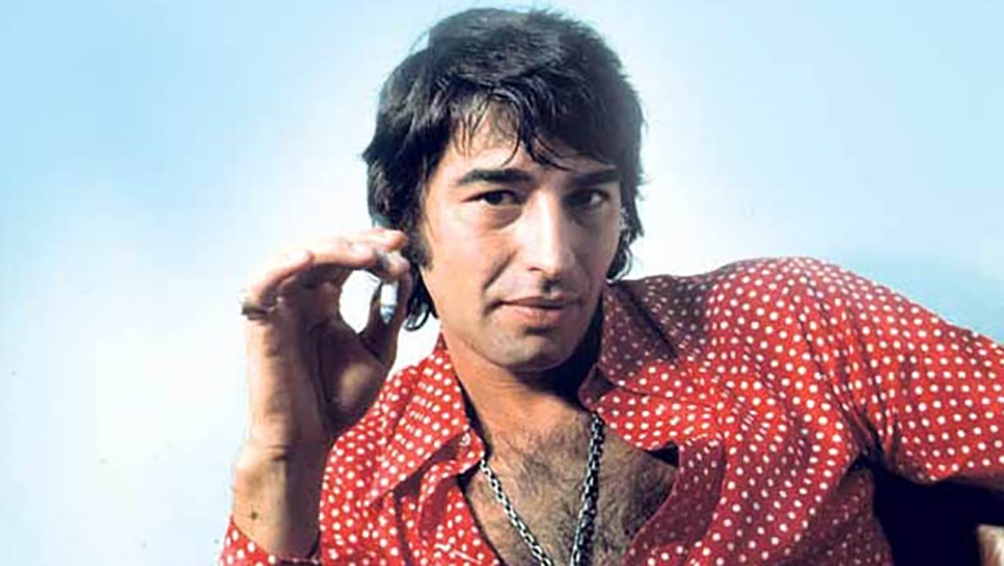La legendaria figura de Sandro vuelve a proyectar su mítica sombra con el lanzamiento de «Tengo una historia así», material publicado hoy a partir de grabaciones encontradas y restauradas, donde se incluyen dos canciones inéditas y versiones nunca escuchadas de otros nueve temas.
El disco de Sony Music viene a completar lo que el 19 de agosto del año pasado, día en el que Roberto Sánchez hubiera cumplido 75 años, empezó a anticiparse con la edición de la pieza «No te vayas todavía», una de las dos novedades absolutas del disco.
La otra obra de su autoría que se suma al extenso y popular repertorio de El Gitano es «Eso que se hace de a dos», donde recupera el pulso rockero de sus inicios con Los de Fuego en compañía de un terceto integrado por Charly García en teclados, Pedro Aznar en bajo y guitarra y Fernando Samalea en batería.
Como valor adicional de la pieza se retoma el reencuentro de Sandro con los exSerú Girán con quienes compartió «Rompan todo», para el disco «Tango 4» de 1991.
Otra gema del volumen es una canción que no había sido editada en Argentina: «Tú, que sabes del amor», nacida del romántico lirismo de Sandro, que fue grabada bajo el título de «Es mucho más mujer» en la edición para Estados Unidos del disco «Vengo a ocupar mi lugar» (1984).
Como rareza del singular repertorio reunido también se cuenta una versión de «La vida dura» que su autor, fallecido el 4 de enero de 2010 a los 64 años, canta en italiano.
El nuevo cancionero reunido donde Sandro luce el impacto de su magnetismo como compositor e intérprete lleva su exclusiva firma en otros siete temas y puede agruparse temáticamente.
Hay dos piezas en las que asume el rol de un amante abandonado: «Mi lágrima número cien» (Es la lágrima número cien/te la voy a dejar como fiel testimonio/de aquel que te supo querer/y hoy te puede decir: ‘vete bien al demonio'») y la atractiva «Compañero de platea» («mi platea es para dos, pero ahora somos tres/yo, tu ausencia y un señor/no sé quién es»).
Otro par donde se ufana de su carácter de muchacho de a pie: «Tengo una historia así» con su reminiscencia tanguera («Y fuimos dando tumbos por la vida/como un corso que viene a contramano/y disfrazamos la verdad con ropa ajena/y quizás el mismo disfraz los dos usamos») y «Volviendo a casa» («Si quieres ya me voy o sino entro/el frío no se fue y sigue lloviendo/o tendré que decirte de otra forma/’¿puedo pasar?’ No ves que estoy volviendo»).
En ese listado se cuela el explícito «Yo te haré mujer», un alegato que no solamente suena a contramano a partir de subjetividades actuales y donde afirma cosas como «Voy a hacer de ti mi mejor creación/Pues trajiste a mí tanta inspiración/Que he de modelar a la perfección/Tu cuerpo infantil, con tanta pasión/Yo te haré mujer, déjame y verás/Yo te enseñaré y tú aprenderás».
Otro guiño a su pasado en las arenas del rock se aprecia en «Hay mucha agitación» (de Dave Williams) y la nómina se completa con «Se te nota» (que compuso junto a su representante Oscar Anderle) y que estrenó en abril de 1970 en el recital del Madison Square Garden de Nueva York que ostenta al menos otros dos hitos: el primero de un latinoamericano allí y el que inició las transmisiones vía satélite en vivo y en directo, llegando a 250 millones de personas en 16 países.
Un informe de la discográfica a partir de la investigación periodística de Graciela Guiñazú, da cuenta que las 11 canciones de «Tengo una historia así» fueron íntegramente grabadas por el ídolo: nueve de ellas en casetes de chromo estéreo en portastudio y dos en cinta abierta, todo sin salir de su célebre mansión de Banfield.
Los casetes estaban en su biblioteca -en el home estudio que luego le regalara a Rubén Aguilera, su productor y arreglador durante una década- y las cintas, en «Excalibur» -la sala de grabación profesional que montó en la casa de huéspedes en el fondo de su domicilio, luego transformado en «El Piano Bar».
Con ese material, la placa que ahora ve la luz nació hace dos años, cuando Jon Aguilera (hijo de Rubén y ahijado artístico de Sandro) comenzó junto a Nelson Pombal (productor de Palito Ortega y Charly García, entre otros) la clasificación, restauración y digitalización de esas grabaciones de entrecasa que Sandro le había confiado a su padre.
El documento histórico y musical completó su ciclo cuando Olga Garaventa de Sánchez, viuda del artista, autorizó a desarrollar este proceso de rescate.
La galería de presencias que aportan al clima de la placa suma 36 artistas, entre ellos 13 de sus músicos: Bernardo Baraj (su compañero en los tiempos de los Black Combo), Rubén Aguilera, Américo Belloto, Ricardo Lew, Jorge Padín, Miguel Tallarita, José Luis Colzani, Oscar D’Auría, Mario Parmisano, Carlos Buono, Víctor Skorupski, Enrique «Zurdo» Roizner y Jorge «el Oso» Bertinetti (integrante de la banda de Sandro desde 1982 y fallecido el 19 de julio pasado). (TELAM)


